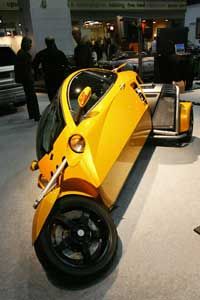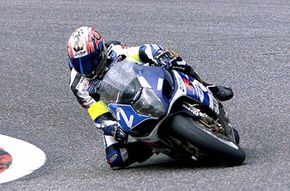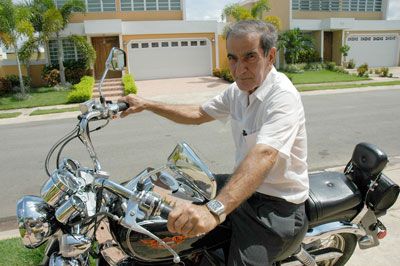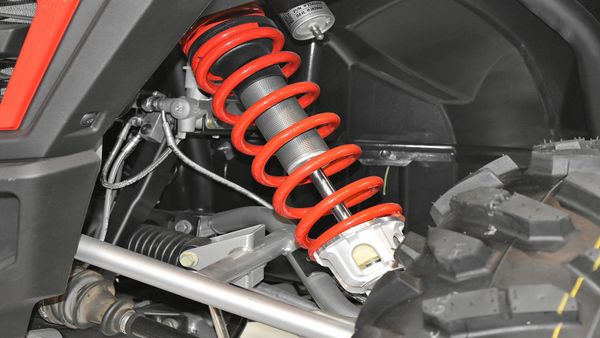Three billion cars will flood the world's roadways by the year 2035, according to the economic forecasting firm Global Insight [source: Global Insight]. Major cities, which are already battling congestion, may not be able to handle that influx of traffic without a major overhaul of the infrastructure. For instance, Forbes Magazine ranked Atlanta, Georgia, as having the worst commute problems in the United States in 2008, with drivers spending 60 hours a year gridlocked on the highway [source: Woolsey].
Enter tiny leaning cars. These three- and four-wheeled vehicles are designed to alleviate these growing traffic problems in urban areas. How do they plan to do that? It's all about size. Many people drive five-passenger cars to and from work but they only carry themselves. With that in mind, tiny leaning cars have minimal space for one or two people to eliminate the wasted space of regular sedans.
Advertisement
And when we say "tiny," we mean it. If you've seen people zipping around in pea-sized Smart Cars, NARO brand tiny leaning cars are even smaller. By arranging the two seats in a row rather than side-by-side, the executive commuter models are just over 3 feet (1 meter) wide. That makes them almost 2 feet (0.6 meters) skinnier than Smart Cars.
So what's the deal with the "leaning?" Despite the name, you can think of tiny leaning cars as cross-breeds between motorcycles and cars. NARO cars, in development by the Narrow Car Company, have four wheels, but at higher speeds use the same tilt system that motorcycles do when they hug curves and corners. The passenger compartment actually shifts with the leaning motion as though riding a motorcycle around a corner to help control the vehicle's center of gravity and keep the wheels stable on the ground.
Where does this fit in with the traffic congestion problem? The Narrow Car Company envisions them being used to scoot in between stalled lanes of traffic, much like cyclists can do, if lane splitting is legal in their state. But the enclosed compartment offers a safer means of travel. And, oh yeah, they get 100 miles to the gallon.
On the next page, we'll take a closer look at the NARO design and a three-wheeled leaning car.
Advertisement



